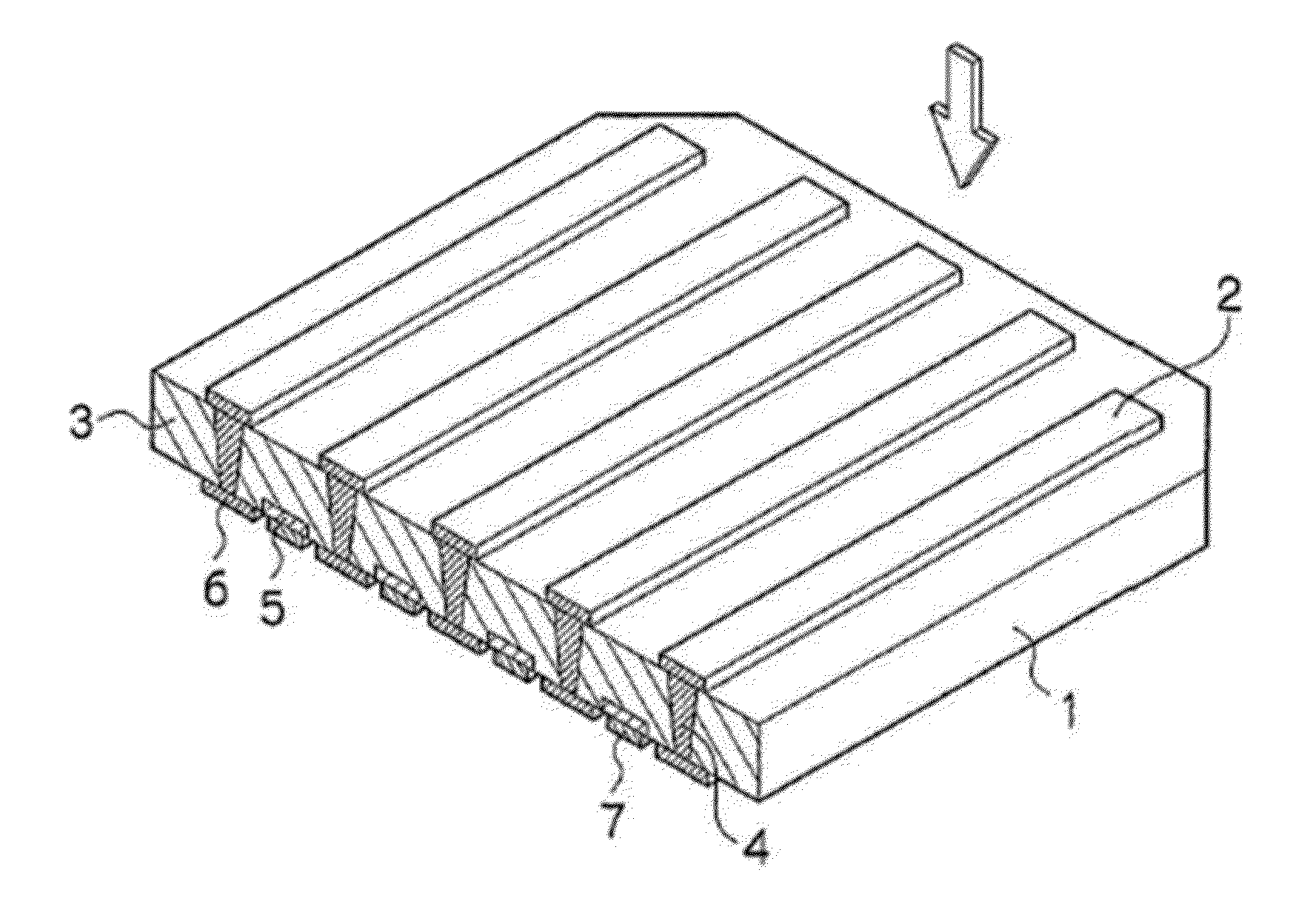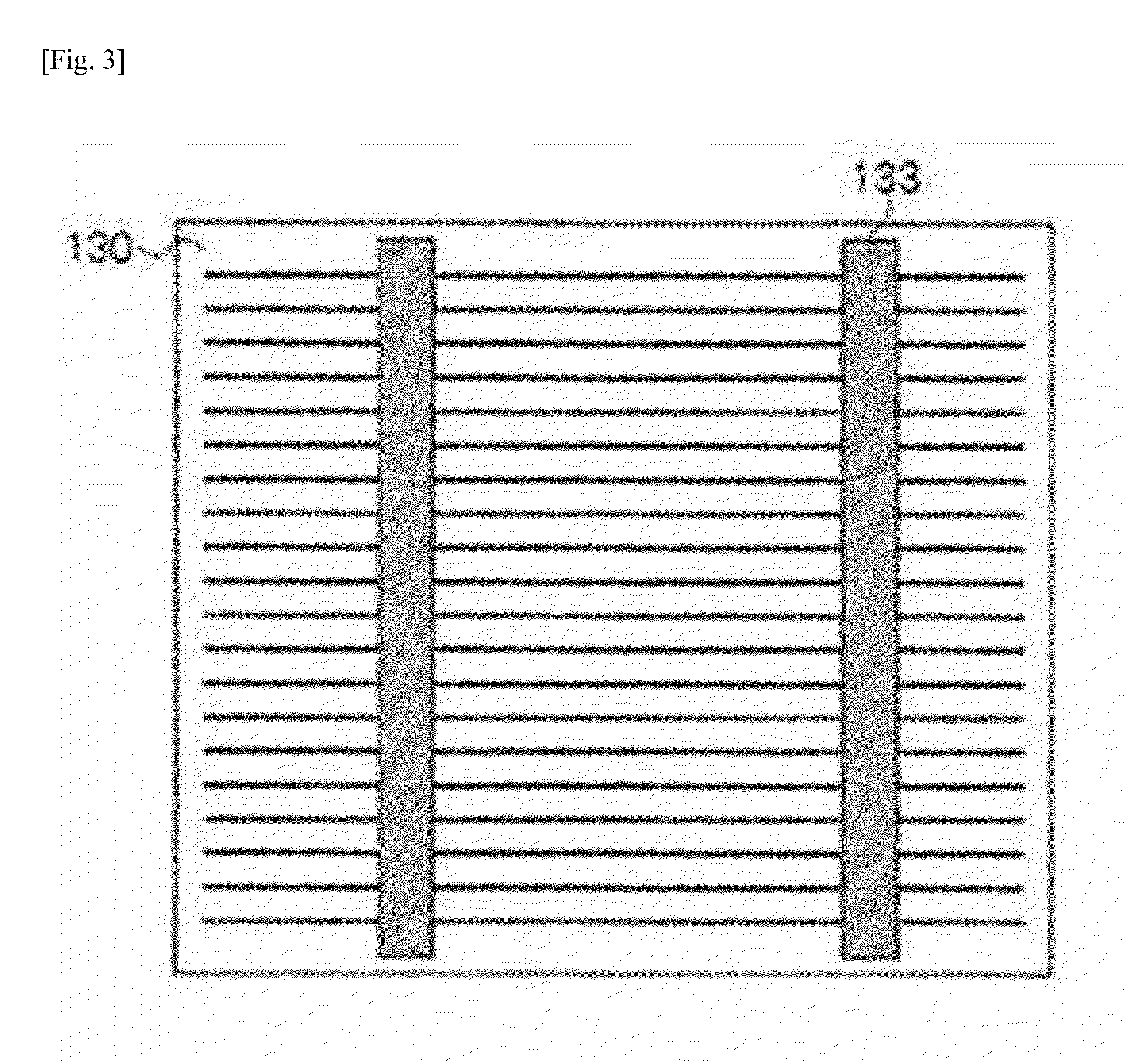Solder bonded body, method of producing solder bonded body, element, photovoltaic cell, method of producing element and method of producing photovoltaic cell
a technology of solder bonded body and solder bonded body, which is applied in the direction of solventing apparatus, manufacturing tools, transportation and packaging, etc., can solve the problems of increased wiring resistance and contact resistance of surface electrodes, difficulty in achieving bonding between solder and the body to be bonded, and solder requires the above-described ultrasonic vibration
- Summary
- Abstract
- Description
- Claims
- Application Information
AI Technical Summary
Benefits of technology
Problems solved by technology
Method used
Image
Examples
example 12
[0247]A solder 12 was prepared in the same manner as in Example 1 except that the bar solder and the plate lead were changed to a tin flat bar (manufactured by E-Material Inc.) and chipped bismuth (manufactured by E-Material Inc.) and that the solder composition was changed from 10 parts of tin and 90 parts of lead to 42 parts of tin and 58 parts of bismuth. Then, the bonding temperature and the bonding property were evaluated in the same manner as described in the above except that the thus obtained solder 12 was used. Further, as a result of examining the cooling curve of the solder 12, the liquidus temperature and the solidus temperature were found to be 141° C. and 139° C., respectively. The results are shown in Table 5.
example 13
[0248]A solder 13 was prepared in the same manner as in Example 12 except that a pure silver round wire (manufactured by Nitto Kagaku Co., Ltd.) was further used to change the solder composition from 42 parts of tin and 58 parts of bismuth to 42 parts of tin, 57 parts of bismuth and 1 part of silver. Then, the bonding temperature and the bonding property were evaluated in the same manner as described in the above except that the thus obtained solder 13 was used. Further, as a result of examining the cooling curve of the solder 13, the liquidus temperature and the solidus temperature were found to be 140° C. and 138° C., respectively. The results are shown in Table 5.
example 14
[0249]A solder 14 was prepared in the same manner as in Example 12 except that the solder composition was changed from 42 parts of tin and 58 parts of bismuth to 61 parts of tin and 39 parts of bismuth. Then, the bonding temperature and the bonding property were evaluated in the same manner as described in the above except that the thus obtained solder 14 was used. Further, as a result of examining the cooling curve of the solder 14, the liquidus temperature and the solidus temperature were found to be 177° C. and 138° C., respectively. The results are shown in Table 6.
PUM
| Property | Measurement | Unit |
|---|---|---|
| melting point | aaaaa | aaaaa |
| solidus temperature | aaaaa | aaaaa |
| temperature | aaaaa | aaaaa |
Abstract
Description
Claims
Application Information
 Login to View More
Login to View More - R&D
- Intellectual Property
- Life Sciences
- Materials
- Tech Scout
- Unparalleled Data Quality
- Higher Quality Content
- 60% Fewer Hallucinations
Browse by: Latest US Patents, China's latest patents, Technical Efficacy Thesaurus, Application Domain, Technology Topic, Popular Technical Reports.
© 2025 PatSnap. All rights reserved.Legal|Privacy policy|Modern Slavery Act Transparency Statement|Sitemap|About US| Contact US: help@patsnap.com



